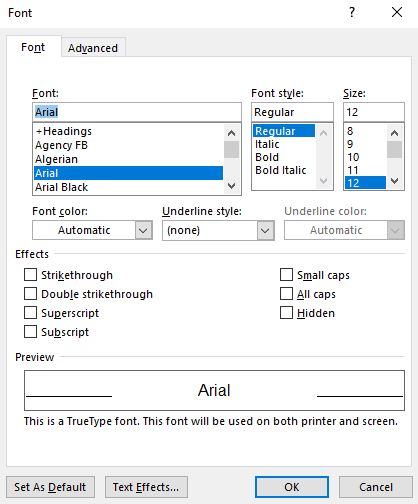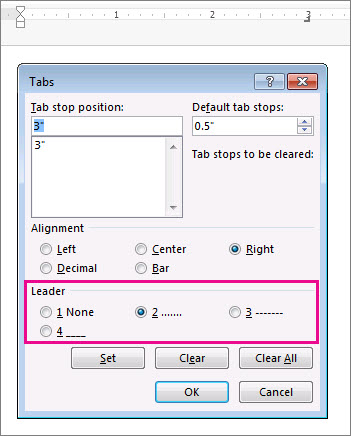Insert Leader Lines In Word For Mac

Last week in the first part of this back to basics series on tab leaders we discussed creating dotted tab leaders in the Tabs palette to separate columnar text. Now, let’s talk about formatting those leaders. Tab leaders–dots, underscores, hyphens, smiley faces, whatever–inserted via the Tabs Ruler are automatically the same font and color as. You can do only one task in Word 2013 in the Tabs dialog box that you cannot do with the ruler: Set a leader tab stop. What exactly is a leader tab stop? A leader tab stop produces a row of dots where the tab character appears. This trick is the only way to get a tab character to appear in. When I change the border selection to insert just a bottom line, it makes a full dotted box. I would like to have a dotted line automatically appear between the text. Word displays the Paragraph dialog box. Click the Tabs button. Specify the desired type of leader and choose the right-aligned type of tab stop. When you are done, click Set.
- Insert Leader Lines In Word For Mac 10
- Insert Leader Lines In Word For Mac 2017
- Insert Leader Lines In Word For Mac 2017
A leader tab shows a series of dots or other characters where the tab appears on the page. Press the Tab key in Word 2016 and the insertion pointer hops over to the next tab stop. The space added is empty, but it doesn’t have to be. Word lets you apply different styles to the empty space, which help create something called a leader tab.
Smac 2.0 registration key. Three styles of leader tabs are available: dot, dash, and underline, as illustrated here.
You can apply a leader to any tab stop in Word other than the bar tab. To do so, follow these steps:

https://mpgugu.weebly.com/usb-boot-norton-ghost-115-download.html. Create the tab-formatted list.
Select the text as a block.
Bring forth the Tabs dialog box.
The quick shortcut is to double-click a tab on the ruler.
Select the tab stop from the Tab Stop Position list.
In the Leader area, choose the leader style.
Click the Set button.
Don’t click OK before you set the tab stop to add the leader. This step is the one you’ll screw up most often.
Click OK.
The leader is applied.
Use the underline leader tab to create fill-in-the-blank forms. In the Tabs dialog box, set a left tab stop at the far right margin (usually, 6.0 inches). Choose the underline leader style (number 4). Click Set and then click OK. Back in your document, type a tab to create a fill-in-the-blank line, such a:

This format is far better than typing a zillion underlines.
There’s only one task that must be done in the Word 2007 Tabs dialog box that you cannot do with the Ruler: Set a leader tab. Butwhat is a leader tab? Vanilla 1 0 2 – hide menu bar icons.
Insert Leader Lines In Word For Mac 10
A leader tab produces a row of dots or lines, underlining the tab character. Three styles are available:
Dot leader tabs180
Line leader tabs180
Underline leader tabs180
Insert Leader Lines In Word For Mac 2017
Although you can apply a leader tab to any tab stop in Word other than the bar tab, it’s used most often with right tab stops. Tire size for 2006 road king.
To add the leader to the tabbed list you’ve created, follow these steps:
Insert Leader Lines In Word For Mac 2017
Select the text as a block.
Bring forth the Tabs dialog box.
Bulk sms sender 2.8 full crack. Click the Tabs button at the bottom of the Paragraph dialog box.
First, summon the Paragraph dialog box by clicking the Dialog Box Launcher button in the lower-right corner of the Paragraph group, on the Home tab. Then click the Tabs button to display the Tabs dialog box.
Select the tab stop from the Tab Stop Position list.
For example, the right tab stop shows up in the Tab Stop Position list as 4″. Click to select that item in the list.
In the Leader area, choose the leader style. Heizer solutions manual.
Choose one of the three other options.
Click the Set button.
Don’t click OK before you set the tab stop to add the leader!
Click OK.
After clicking the Set button, you can click OK to close the Tabs dialog box and gawk at your text.

Insert Leader Lines In Word For Mac
UNDER MAINTENANCE